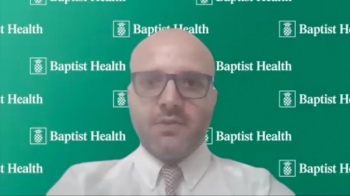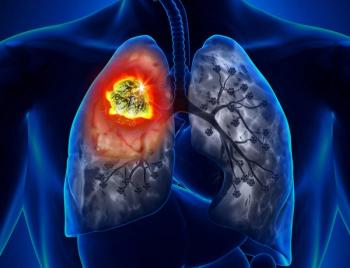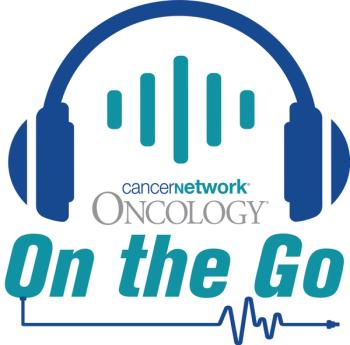
Oncology NEWS International
- Oncology NEWS International Vol 10 No 12
- Volume 10
- Issue 12
Three-Times-Daily Radiotherapy Plus Cisplatin Feasible in NSCLC Patients
SAN FRANCISCO-In stage III non-small-cell lung cancer (NSCLC), an intensive regimen of three-times-daily (TID) radiotherapy and escalating doses of daily cisplatin (Platinol) was found to be feasible and well accepted by patients, according to investigators from the Mayo Clinic, Scottsdale, Arizona. The findings were presented at the 37th Annual Meeting of the American Society of Clinical Oncology (ASCO abstract 1320).
SAN FRANCISCOIn stage III non-small-cell lung cancer (NSCLC), an intensive regimen of three-times-daily (TID) radiotherapy and escalating doses of daily cisplatin (Platinol) was found to be feasible and well accepted by patients, according to investigators from the Mayo Clinic, Scottsdale, Arizona. The findings were presented at the 37th Annual Meeting of the American Society of Clinical Oncology (ASCO abstract 1320).
The novel regimen includes TID radiotherapy to a dose of 57.6 Gy in 1.5 Gy fractions in the morning and evening with a midday dose of 1.8 Gy, given over 12 weekdays. Four hours separated the fractions. Cisplatin was administered daily at three escalating dose levels: 0 mg/m² (5 patients); 5 mg/m² (5 patients); and 7.5 mg/m² (10 patients).
Randomized trials have shown that concurrent cisplatin and radiotherapy improve survival compared with radiotherapy alone, and that TID radiotherapy achieves better survival than daily radiotherapy. There has been relatively little information, however, regarding concurrent chemotherapy and TID radiotherapy. This pilot study incorporated both approaches, said lead investigator Stephen Schild, MD.
"We found that you can give three-times-a-day radiation, which has not been done before, as far as we know," Dr. Schild said. "Patients get this for 2½ weeks, and the advantage is that treatment is over quickly, as compared to the traditional regimen of 6 to 8 weeks. It’s a very intense 2½ weeks, but patients are able to get back to their normal lives sooner."
Overall grade 3-4 toxicities were almost identical in the three groups. "You would think this regimen would be much more toxic, but it really is not in terms of the overall rate of serious toxicities," he noted. No patients died of a treatment-related toxicity, and only one patient had a grade 4 toxicity (esophagitis).
The 7.5 mg/m² dose was considered the maximum tolerated dose of daily cisplatin that can be given with this intense regimen of TID radiotherapy.
Responses were determined with serial CT scans. Three of 20 patients (15%) had a complete response, 11 (55%) had a partial response, and 6 (30%) had less than a partial response. In up to 2 years of follow-up, median survival is 19 months, compared with the 15 to 17 months median survival seen in most phase III studies of standard regimens, Dr. Schild said.
"We think this regimen is as good as anything else, and it is done quickly. That’s a major advantage," he remarked. "Logistically, however, it is somewhat more difficult for the staff."
Articles in this issue
almost 24 years ago
Elderly Colon Cancer Patients Benefit From Adjuvant Chemotherapyalmost 24 years ago
Stromal Cells May Be Involved in Development of Breast Carcinomaalmost 24 years ago
Intercultural Facts About Canceralmost 24 years ago
Nurse-Provided Education Crucial to Sural Nerve Graft Prostatectomy Patientsalmost 24 years ago
18-Gene Cluster Found in ER-Positive Breast Cancersalmost 24 years ago
Viread OK’d for Treating HIV With Other Antiretroviralsalmost 24 years ago
Surgeons in New York Operate on Patient in Francealmost 24 years ago
Fulvestrant Reduces Cell Turnover Index More Than Tamoxifenalmost 24 years ago
New Lung Cancer Campaign Launchedalmost 24 years ago
CPDR Updates Its Prostate Cancer WebsiteNewsletter
Stay up to date on recent advances in the multidisciplinary approach to cancer.


















































































